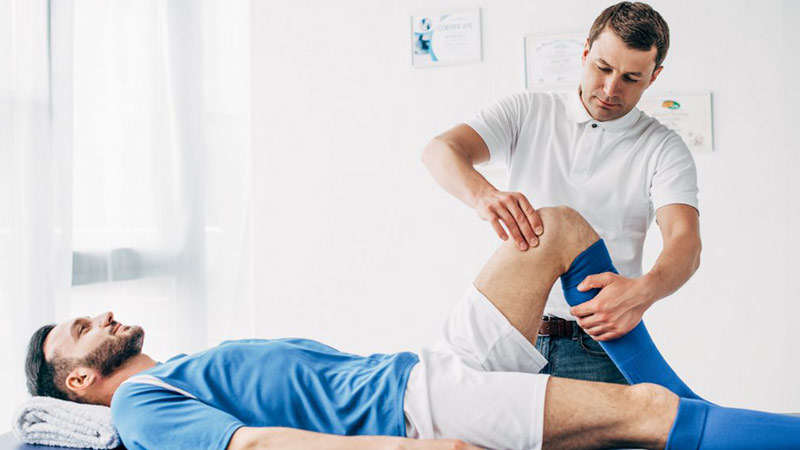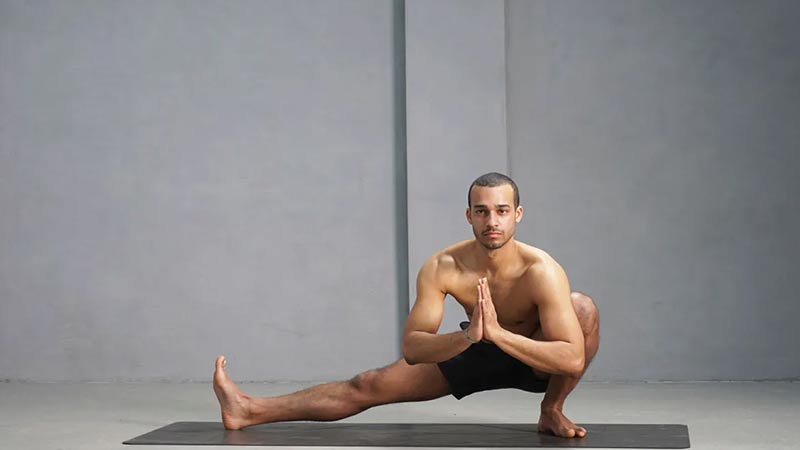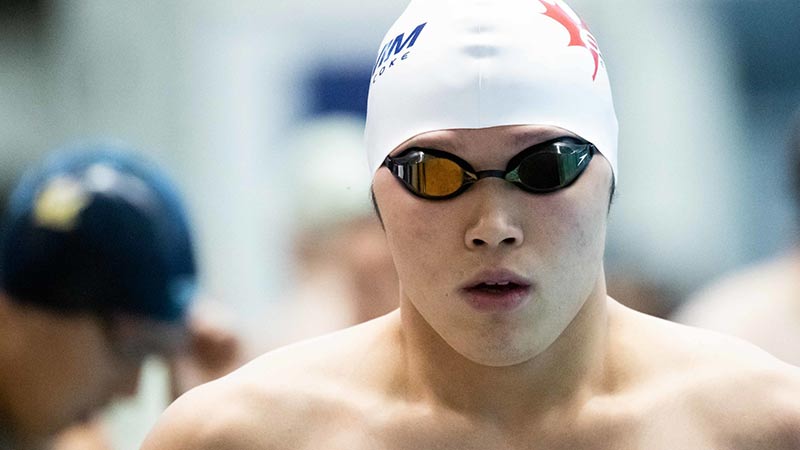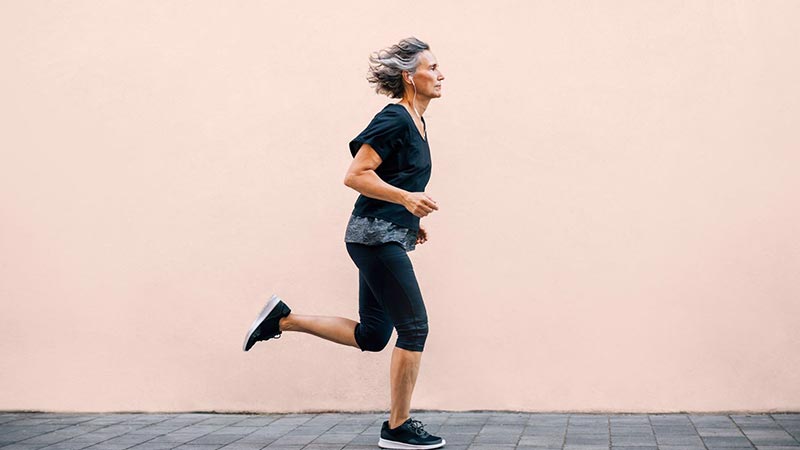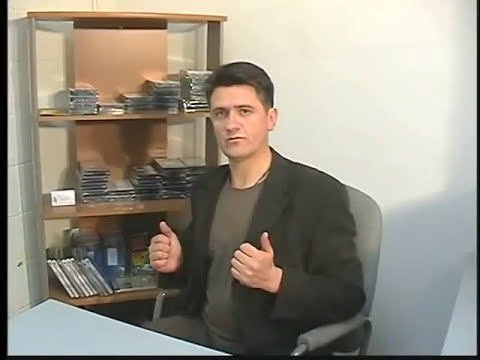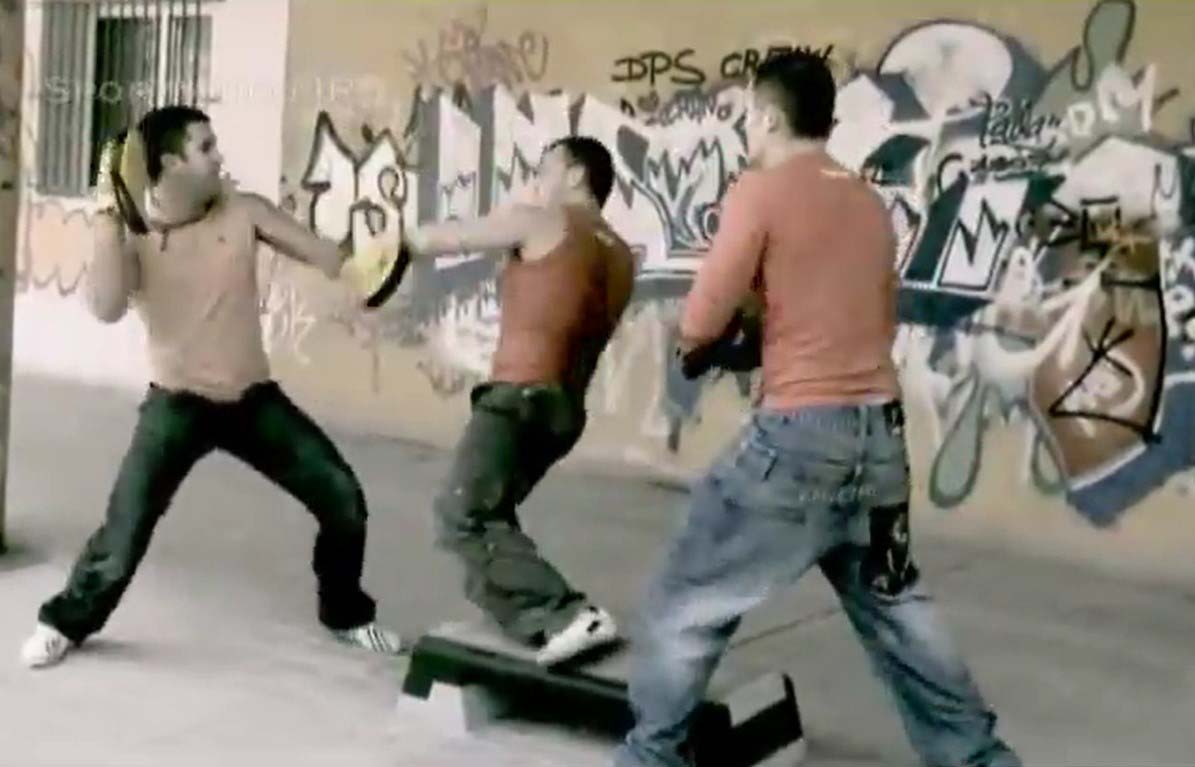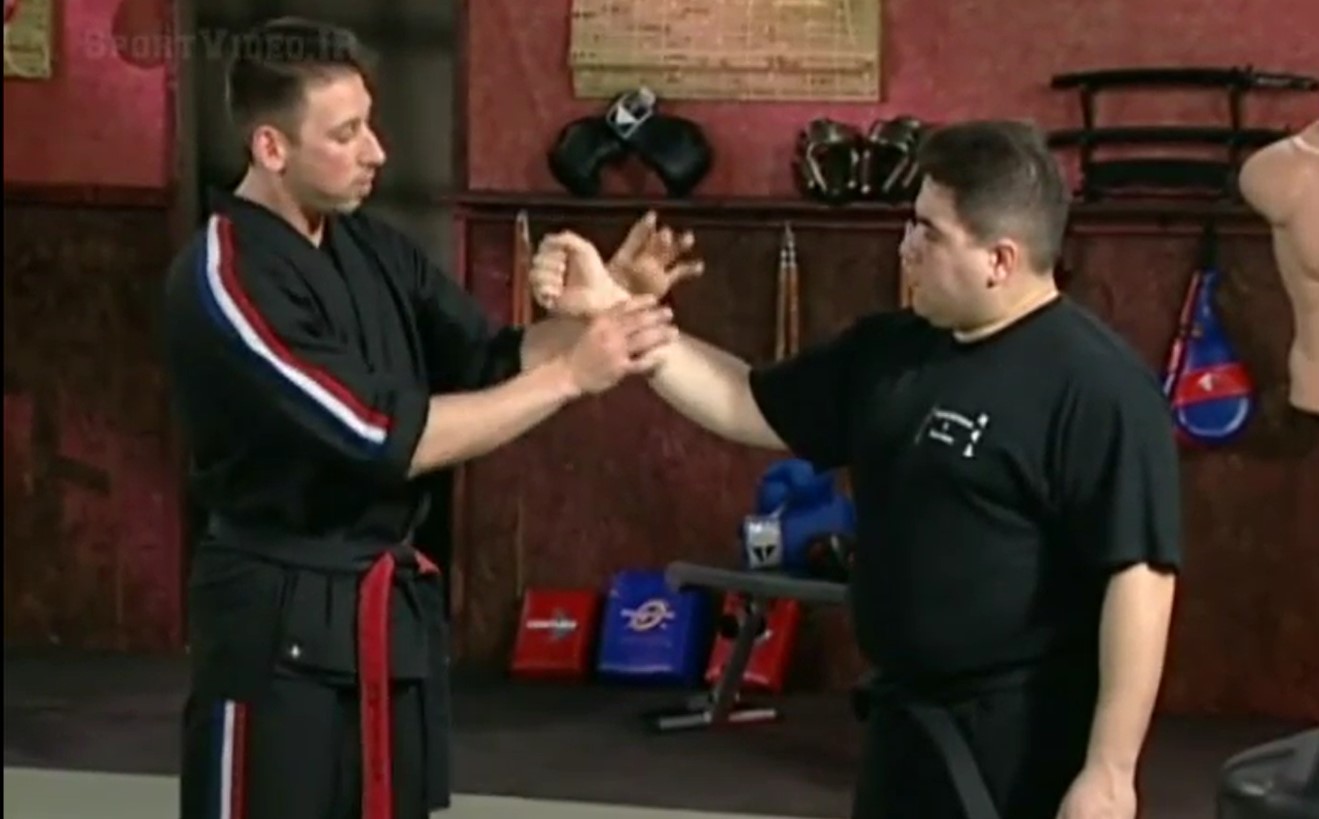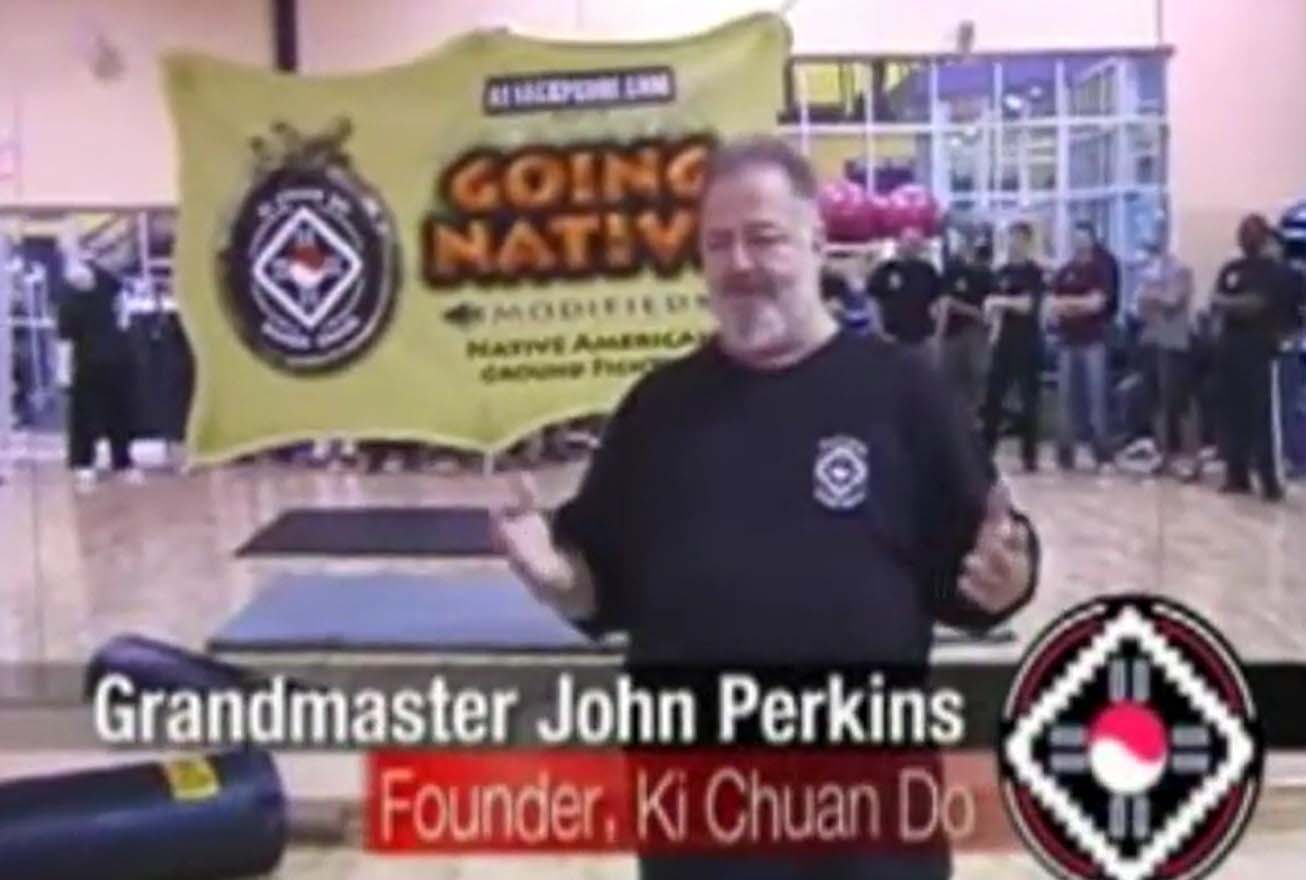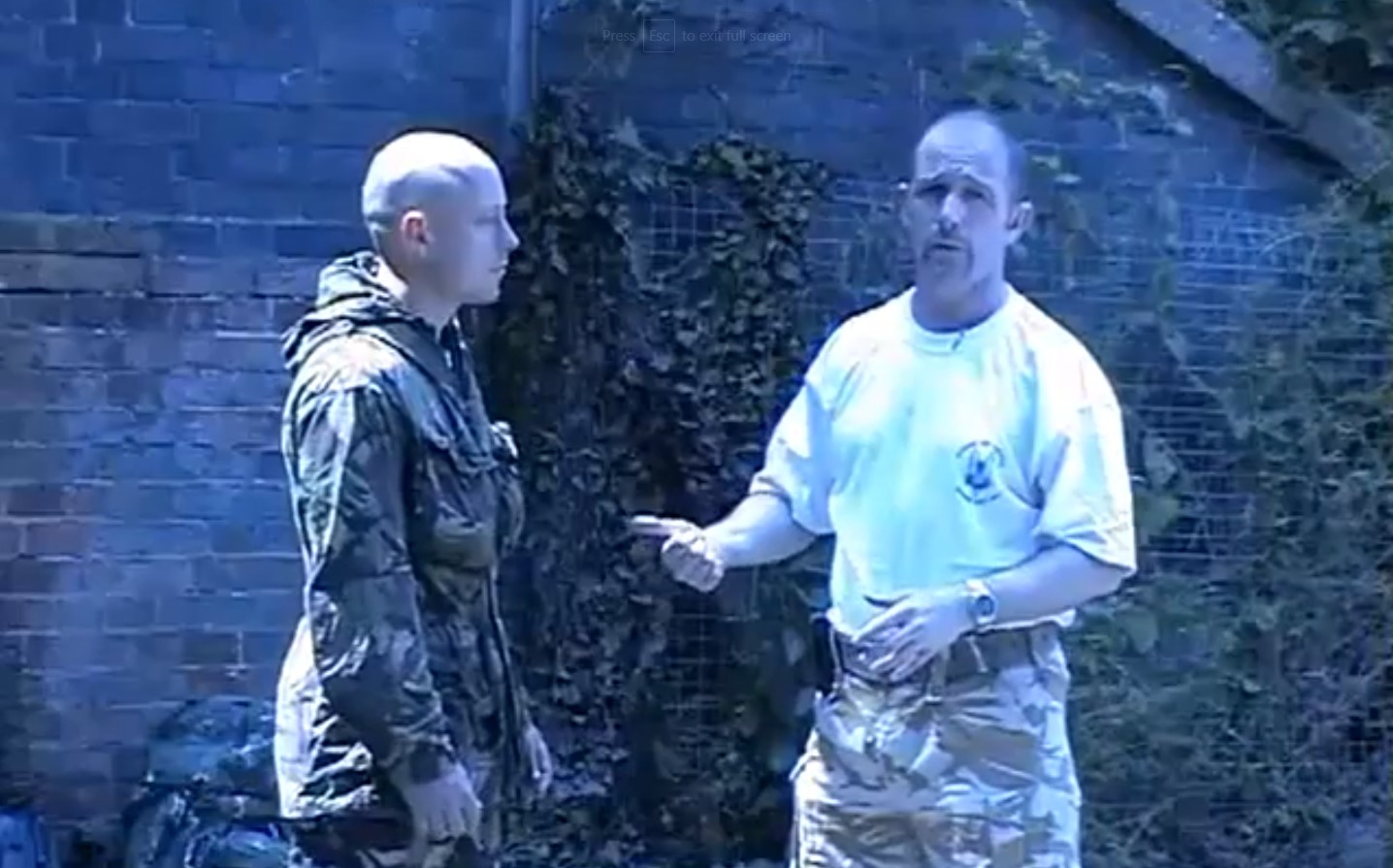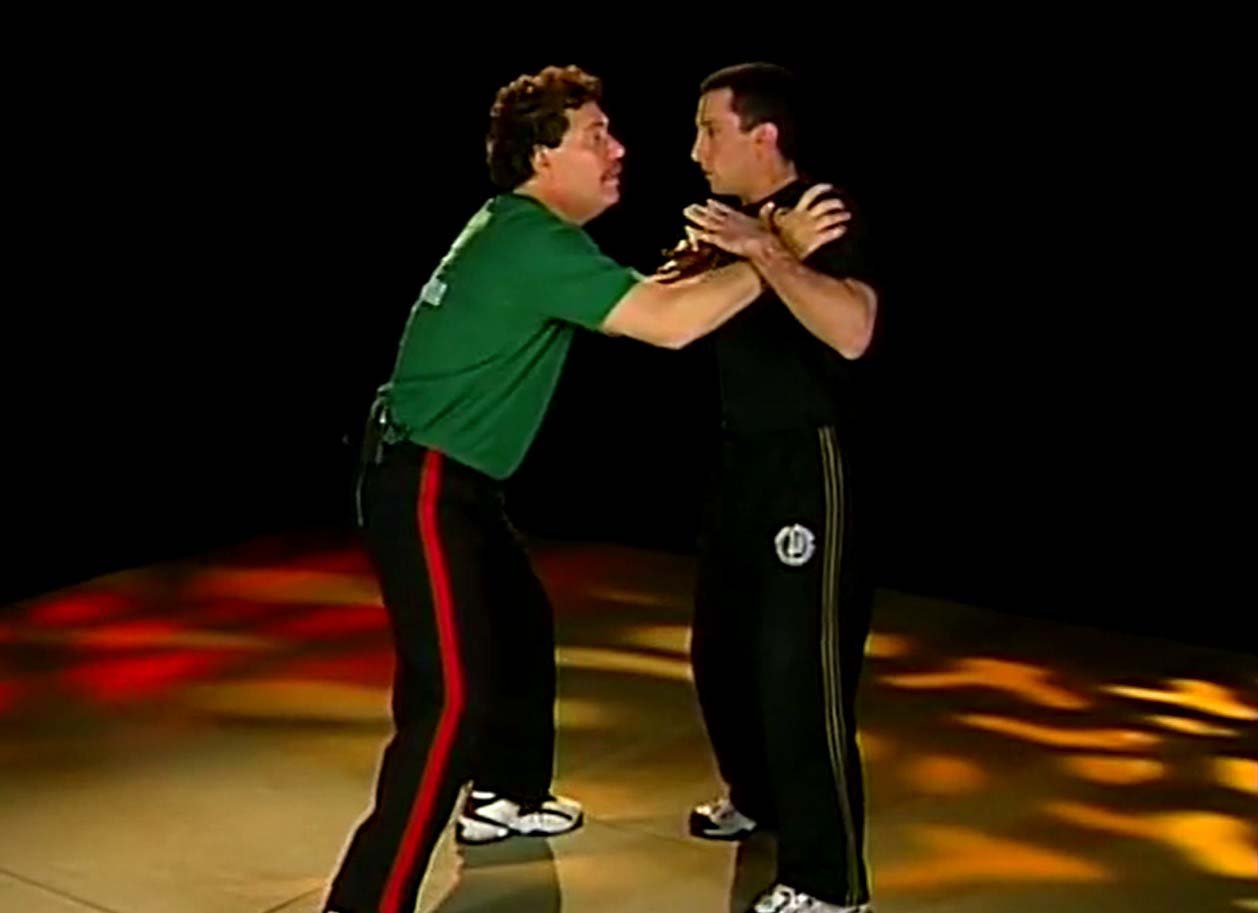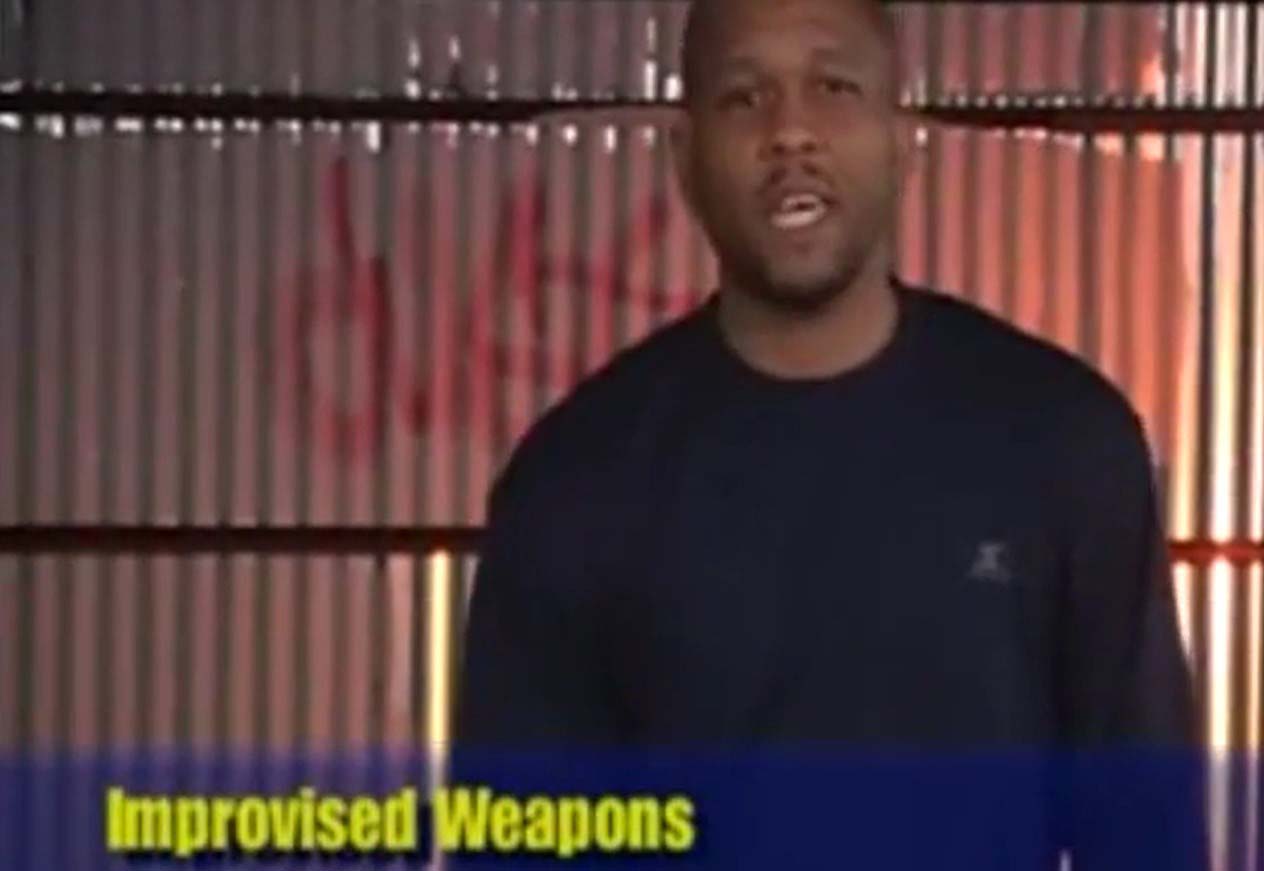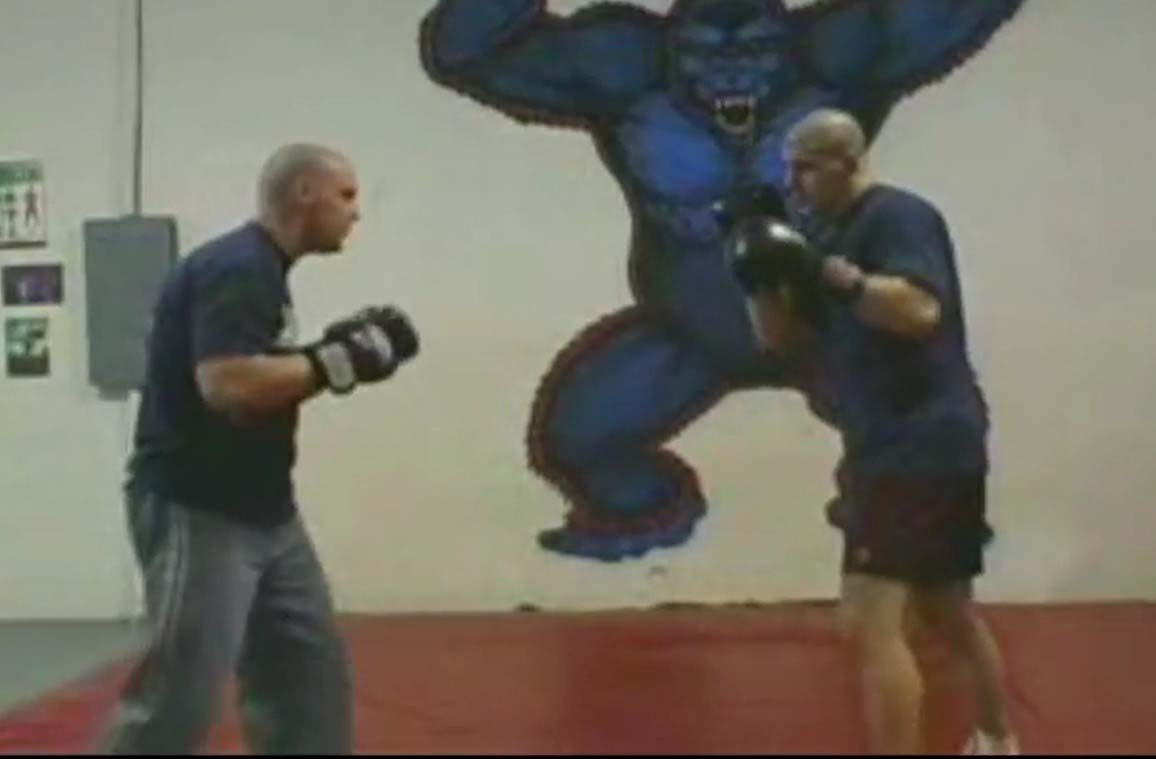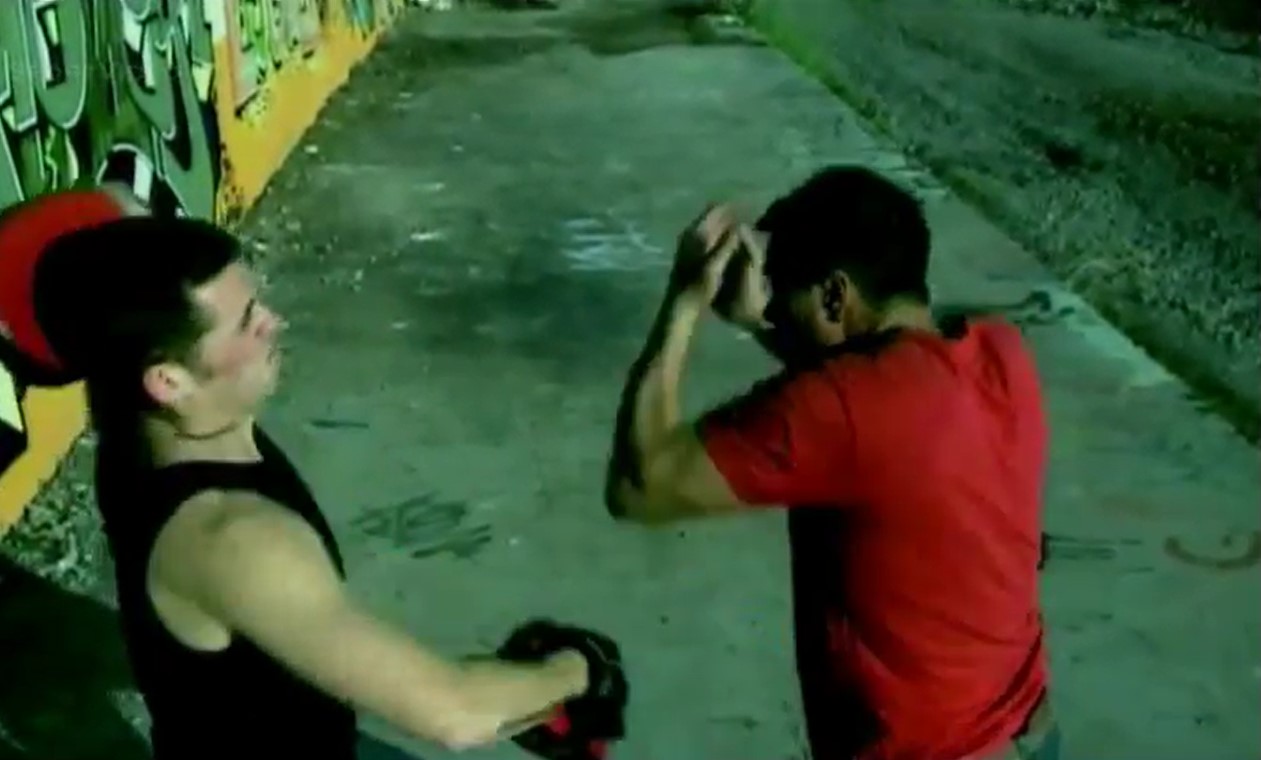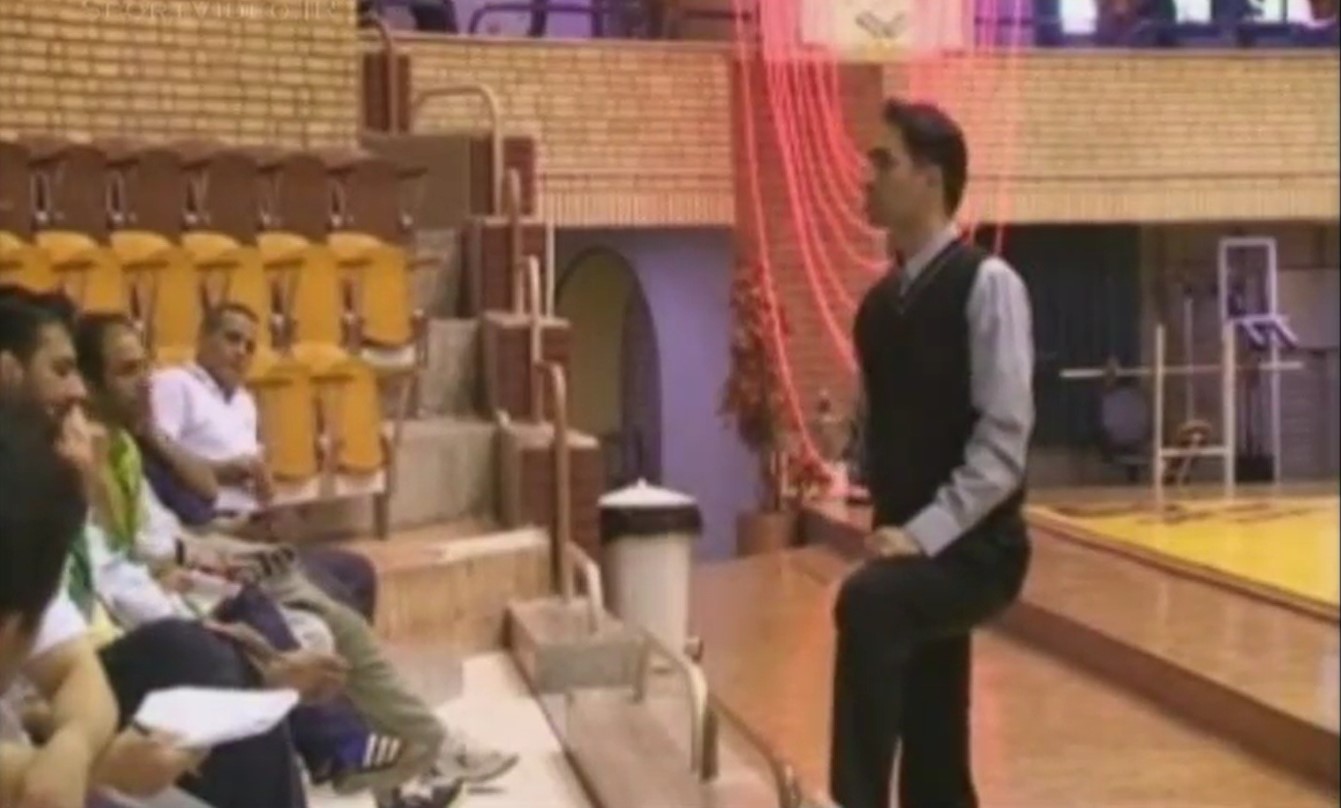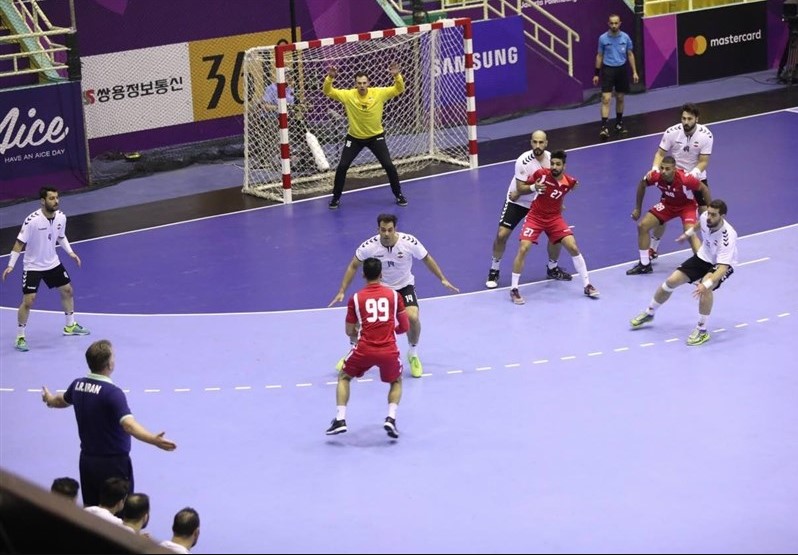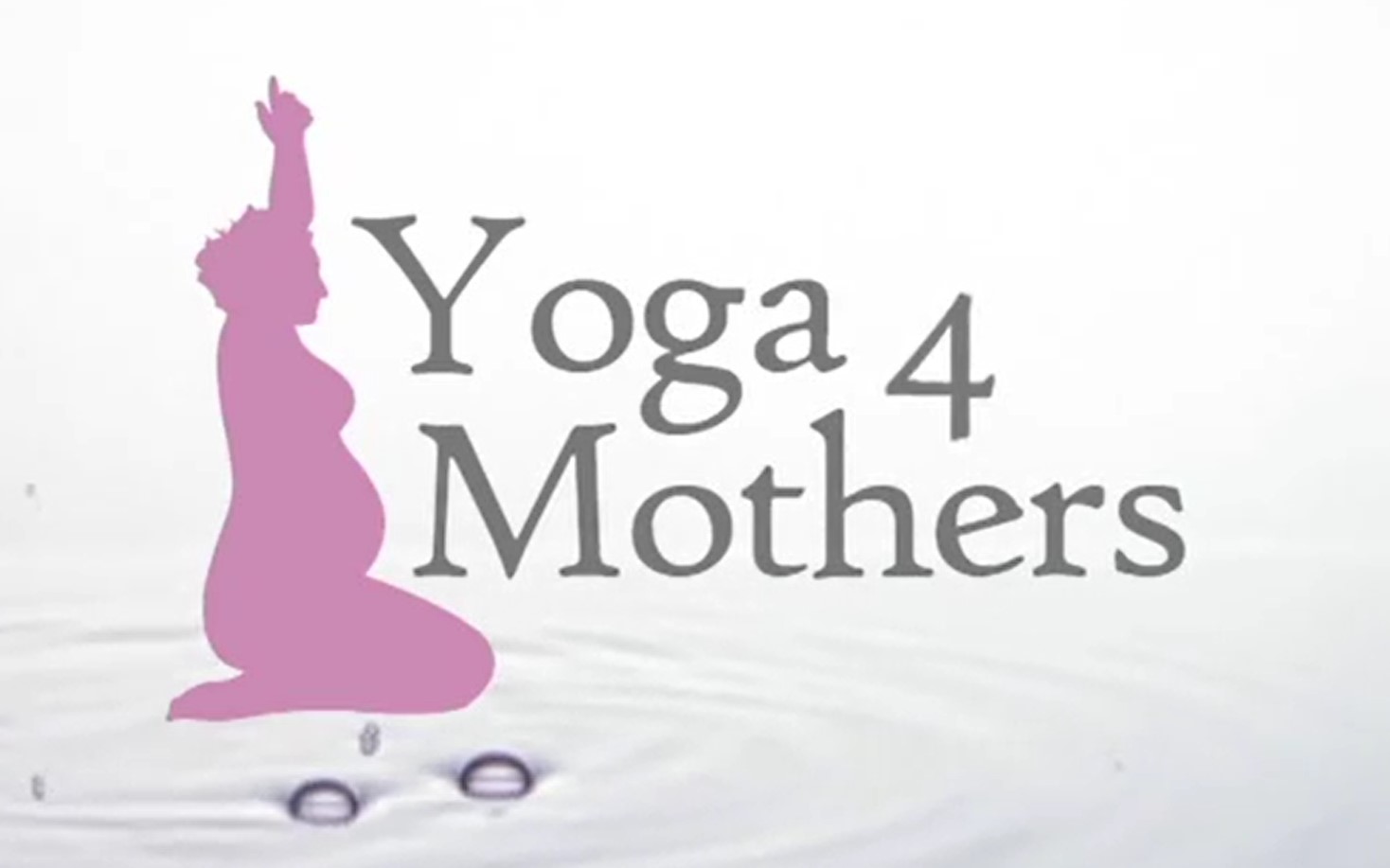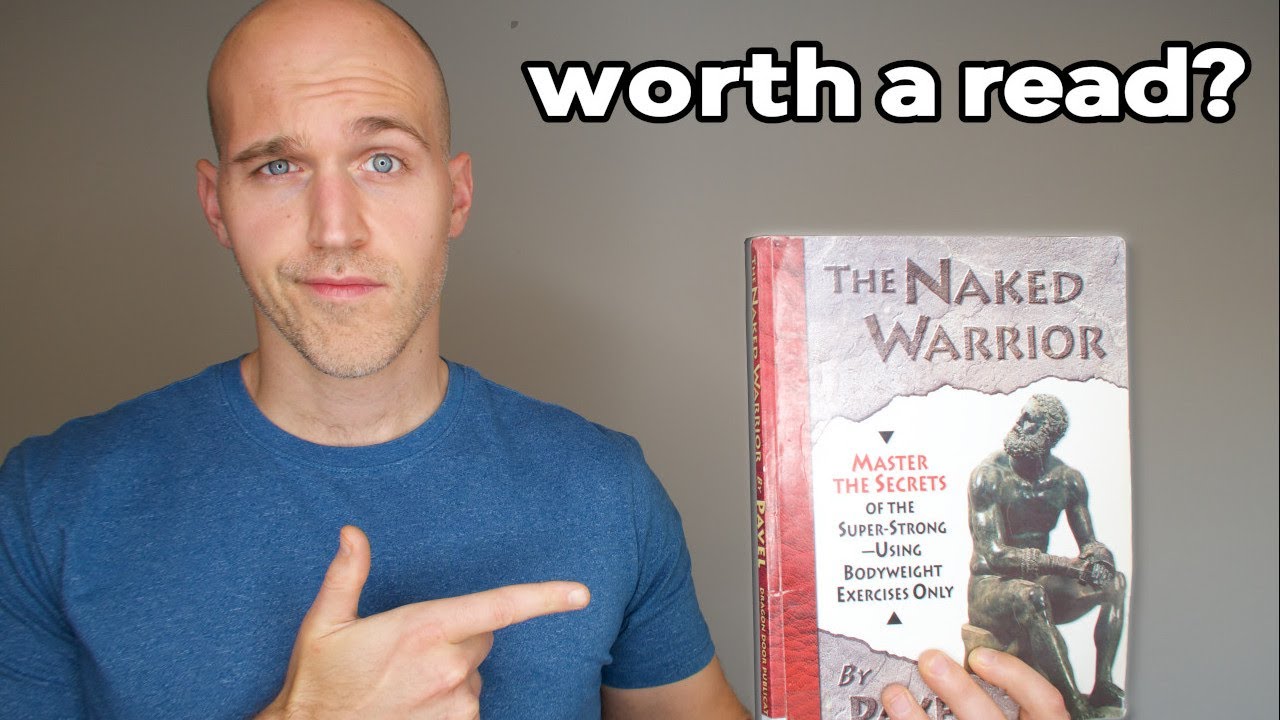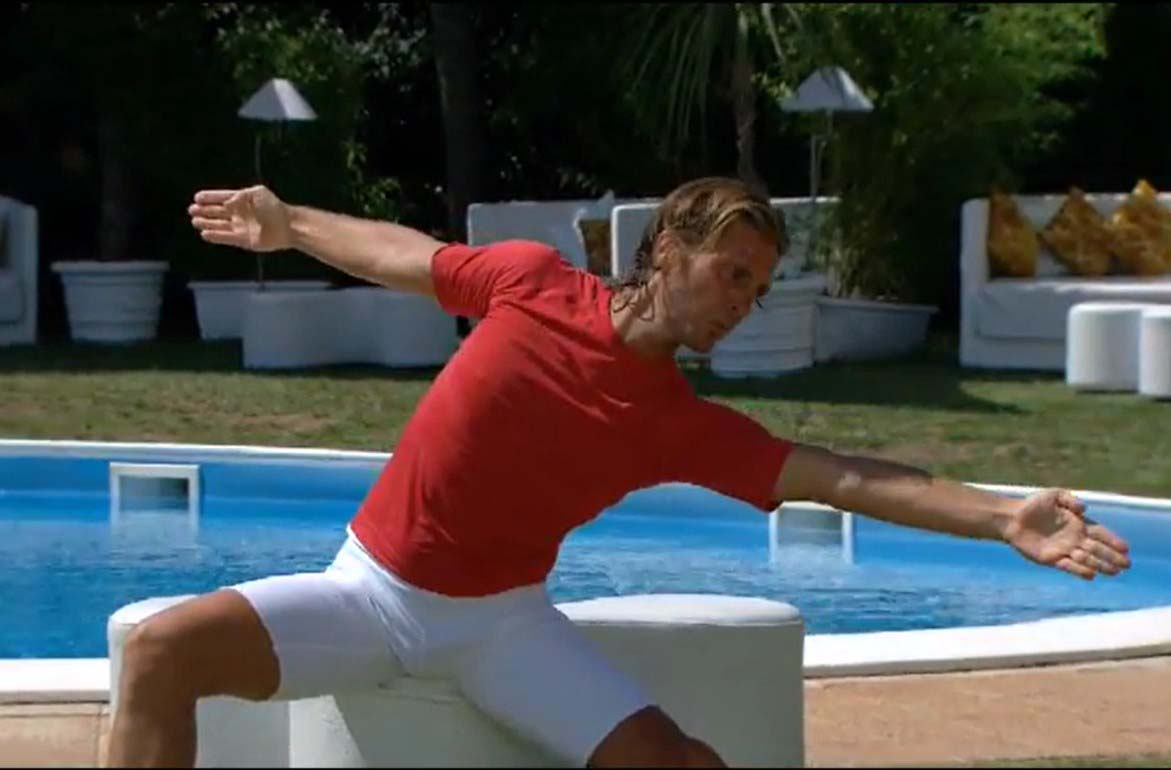دفاع شخصی خیابانی: روشهای نوین مبارزه زمینی
در دنیای دفاع شخصی خیابانی، مبارزه زمینی اغلب با کشتی یا جوجیتسو برابر دانسته میشود. اما روش “مبارزه زمینی بومی آمریکایی اصلاح شده” در سیستم Guided Chaos (GC) رویکردی کاملا متفاوت ارائه میدهد.
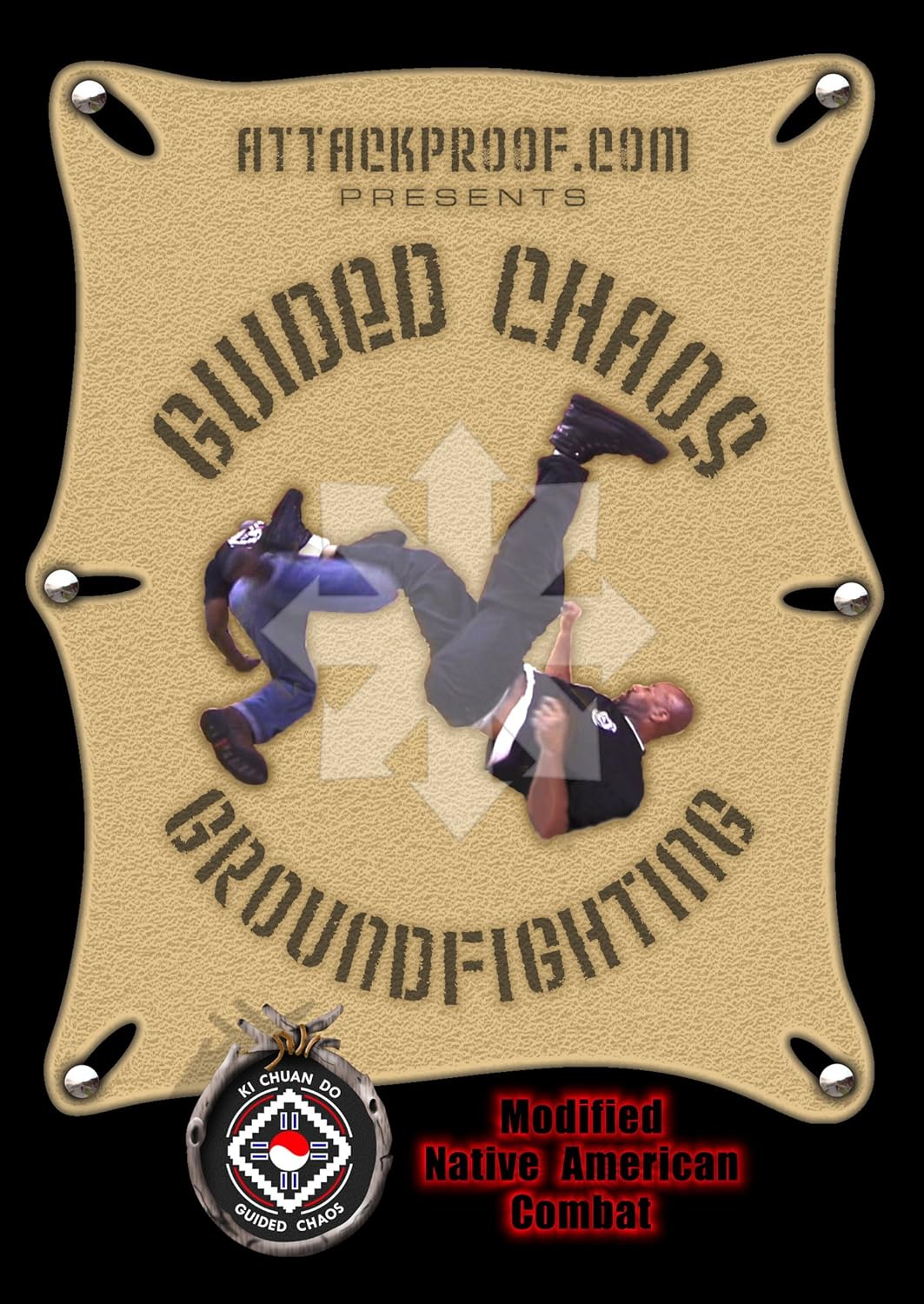 |
نام اصلی: Guided Chaos'MODIFIED NATIVE AMERICAN GROUNDFIGHTING Origins - Vol 1 زبان فیلم: انگلیسی سال تولید: 2006 کمپانی سازنده: www.attackproof.com دفاع شخصی خیابانی: روشهای نوین مبارزه زمینی |
|
نام اصلی: Guided Chaos'MODIFIED NATIVE AMERICAN GROUNDFIGHTING Origins - Vol 1 |
یکی از جنبههای جالبتر دفاع شخصی خیابانی آشنایی کننده گایدد کیوس (GC) برای مبتدیان و مشاهدهگران بیرونی، “مبارزهی زمینی اصلاحشده بومی آمریکایی” مایستر پرکینز است. بسیاری از مردم نه تنها هرگز هنرهای رزمی بومی آمریکایی را ندیده یا تجربه نکردهاند (به دلیل کمبود افراد عمیق زنده امروز و تعداد کوچکتری از آنها که علاقه به به اشتراکگذاری مهارتهایشان با عموم مردم داشته باشند)، بلکه بیشتر مبارزان هنرهای رزمی و طرفداران ورزشی مبارزه حتی نمیتوانند از یک روش موثر برای مبارزه در زمین که از روشهای گریپلینگ (کشتیرانی، جوجیتسو، و غیره) که در حال حاضر به طور یکسان در سراسر جهان تمرین میشوند، تفکر کنند. حتی پیشنهاد کردن اینکه یک روش بسیار متفاوت ممکن است برای خشونت واقعی هم موثرتر باشد، به طور فوری تردید را فرا میخواند، چرا که بیشتر مردم به گونهای برنامهریزی شدهاند که “مبارزهی زمینی” را مترادف با “کشتیرانی” یا “گریپلینگ” در نظر میگیرند.
بیایید یک نگاه تحلیلی به اینکه مبارزهی زمینی اصلاحشده بومی آمریکایی گایدد کیوس در واقع چیست، چرا است و چگونه و چرا از روشهای معمول مبارزهی زمینی (گریپلینگ) متمایز است، بیندازیم.
برخورد با تمایز تحلیلی
دفاع شخصی خیابانی گایدد کیوس، بر خلاف گریپلینگ، بیشتر تمرکز میکند به تمایز بیشتر، به جای مبارزه با دشمن. “بازی” در اینجا به معنای ادغام دو بدن به یک سیستم نیروها برای بیش از یک لحظه است. به طور سادهتر، روشهای گریپلینگ معمولی بیشتر تمرکز بر ادغام با مخاصم در آنجا است که شریک تلاش میکند که با او “متصل شود” تا تکنیکهای خود را اعمال کند. گریپلری که در حال حاشیهکشی به حالت حریف است، سعی میکند که فاصله بین بدن خود و حریف خود را کمینه کند، بنابراین کنترل بیشتری را بر تمام حرکات حریف دارد و فرصتهای بیشتری را برای اعمال قفل و شکست مشترک و گردنزدن/خفه کردن فراهم میکند.
کمینه کردن فضای موجود برای حریف، فرصتهای کمتری برای حریف برای ضربه زدن به گریپلر (حداقل با استفاده از ضربههای معمولی) ایجاد میکند و به گریپلر امکان استفاده از وزن کامل بدن و قدرت عضلات مرکزی خود را در برابر مفاصل ضعیف تر مجزا حریف میدهد، شرط اینکه گریپلر حساسیت، چابکی، تحمل و دانش کافی برای کار کردن با تکنیکها در برابر حریف خود داشته باشد. حتی وقتی روشهای ضربهزنی معمولی در گریپلینگ یکپارچه میشوند، مانند در استراتژی محبوب “ضربه و خوردن” در رقابتهای هنرهای رزمی مختلط، ضربهزنی معمولاً از جایگاههای مقرر شده از حداکثر مشارکت (مانند ضربات از جایگاه Mount یا ضربات زانو از جایگاه کنترل کننده جانبی) انجام میشود تا کنترل روی حرکات حریف را حفظ کند در حالی که فضا را به اندازه کافی برای ضربه زدن برای گریپلر ایجاد میکند.
مبارزهی زمینی GC، به طرف دیگر، ما را به حداقل مبارزه دعوت میکند. به جای مبارزه با دشمن، یک عملگرای GC سعی میکند که حریف به حرکت آزاد خود بپردازد، به جای اینکه بدن خود را برای ادغام با حرکات یک دشمن تنها روی یک روشنایی از چندین لحظه متمرکز کند. تماس با دشمن، به جای فشرده و مداوم در گریپلینگ معمولی، گذرا و حداقل است، اصولاً شامل پاز، ضربهزنی، ضربات، خرد کردن، چینش و پیچاندن سریع است. اصل دعوت ما را به امکان استفاده از یک عنصر ارزشمند به میدهد که برای گریپلر معمولی به کار نمیرود: همراهی.
حالت حرکت زمین
هر چند یک گریپلر خوب نسبت به حریف خود حرکتپذیر است، به این معنا که او میتواند به سرعت روی بدن و دور حریفش بالا رود، اما بخاطر بخش مشغلهزای گریپلینگ، گریپلر از حرکت سریع نسبت به محیط کلی ممنوع است. در حالی که او به حریف خود متصل است و به سمت شکست حریف میکند، گریپلر از حرکت آزاد نیست که به سمت محیطی که در آن مبارزه میکند، حرکت کند.
ممارس گایدد کیوس، به طور خاص به دلیل اینکه از دشمن دور میماند (از طریق حرکت سریع، تشنجی و مسلم و حساسیت آموزشدیده)، آزاد است که هر جایی که بخواهد حرکت کند. علاوه بر این، حرکت سریع در سطح زمین (عمدتاً به صورت پیچیدگی) چیزی است که به صورت مداوم در آموزش مبارزهی زمینی GC آموزش داده میشود. این نوع آموزش به صورت چشمگیری از بیشتر برنامههای گریپلینگ معمولی خالی است، فقط به این دلیل که با پارادایم گریپلینگ از ارتباط مداوم مانع شدهاند.
ورزشی مقابل جنگ
تضادهایی که تا کنون بررسی شدهاند، تفاوت اصلی بین گریپلینگ معمولی زمینی و مبارزهی زمینی GC را آشکار میکند: بیشترین روشهای گریپلینگ مدرن برای پارادایم ورزشی طراحی شدهاند، در حالی که مبارزهی زمینی GC برای جنگ واقعی طراحی شده است. به دلیل اینکه امکان حضور مخاصمان چندگانه در جنگ واقعی همیشه وجود دارد، هدف از طریق مخاطرهور شدن با یک حریف در زمین، که حرکت و زمین را فدا میکند، استراتژی بسیار خطرناکی است. در حالی که داستان وجود دارد که یک گریپلر به زمان خرید کردن مخاطبان با استفاده از حریفش که در زمین افتاده است، در مقابل ضربهها و گلولههای حملهکنندگان دیگر وقت خریده است، این به سختی یک استراتژی قابل اعتماد برای حساب کردن است. استراتژی بهتر به همان چیزی است که یک عملگر GC از آن استفاده میکند: در حال حرکت و آزاد ماندن تا جلوگیری از هدف قابلیت ضربهزنی و گریپلها در حالی که به حریفان نزدیکترین حملههای توانمند، دقیق و کامل بدن را ارائه میدهند، در حالی که سعی در ایجاد یک پنجره برای فرار از جمعیت دارند.
این دقیقاً همان چیز است که استراتژی چندگانهی GC شامل میشود: حرکت مداوم و پیشبینیناپذیر (به صورت مراحل سریع، گامهای پاشنهزنی در حال ایستادن و رولینگ هنگام در زمین؛ ضربهزنی سریع، قدرتمند و کامل بدنی از همه زوایا (ضربهزنی و ضربهها و چینهزنی و ضربات بدنی از روی زمین؛ و دیدنی به فرار از حمله جمعیت (شکست جمعیت برای فرار در حال ایستادن و ایجاد فضا برای بلند شدن و سپس فرار در زمین).
اثبات شده در جنگ جهانی دوم
اگر این استراتژی مبارزهی زمینی به نظر نو و یا آزمایش نشده میآید، متوجه این نکات از کتاب کشتن یا کشته شدن از سرهنگ تی. رکس اپلگیت، یکی از بزرگترین آثار دربارهی مبارزه نزدیک دوره جنگ جهانی دوم شوید.
“اجتناب کنید، اگر امکان دارد، با دشمن خود به زمین بروید. . . .
یک مصوبه ای که باید اطاعت کنید: بار اول به زمین رفتن، هرگز حرکت نکنید. شروع به رولینگ و سعی کنید که به سرعت به پا برگردید. اگر نمیتوانید بلند شوید و نمیتوانید رول بخورید، بر روی ساقه و شانههای خود چرخش کنید تا بتوانید به دشمن خود روبرو شوید و با پاهای خود هر تلاشی را برای نزدیک شدن به شما مسدود کنید.
به یاد داشته باشید، برای رسیدن به زمین لازم نیست که هنگامی که حریف خود را در آنجا قرار دهید، روی زمین بروید. میتوانید او را با پاهای خود به پایان برسانید. دشمن شما میتواند به همان شیوه که شما برای باقیماندن روی زمین استفاده میکنید، از طریق ضربهزنی با پاهای خود، به پایین بروید.
هنگامی که در زمین قرار دارید، موضوع حمله از یک حریف خوانده شده از جایگاه وضعیت، میتواند از یک حملهکننده واقعی استفاده کند.”
(ص ۱۵- تاکید از جزئیات اصلی)
“زمانی که در زمین، به حملهی حریف ایستاده است، فرد میتواند از پاهای خود برای جلوگیری از نزدیک شدن یا ادارهی یک ضربه مرگبار بهرهمند شود.”
(ص ۱۶-۱۷)
“در اولین فرصت، باید سعی کند که به پا برگردد.”
(ص ۲۰)
با وجود اینکه او به عنوان یک متخصص در روشهای ورزشی گریپلینگ، سرهنگ اپلگیت، مانند جان پرکینز، فهمید که در شرایط مبارزهای واقعی، جایی که چندین حریف ممکن است بوته و خطبه بر روی شما بگذارد، حرکتپذیری بالا، آزادی، پیشبینیناپذیری و توانایی برای حفظ تعادل و تکنیک چندین دشمن در زمین، اولویت بالا را دارد.
اگر چنین چیزی در جنگ جهانی دوم اجازه داده شده باشد، چه بسا که در جنگهای بعدی نیز بتواند به شما کمک کند.
Orginal Description:
One of the more intriguing aspects of Guided Chaos (GC) for beginners and outside observers is Master Perkins’ “Modified Native American Ground Fighting.” Not only have most people never seen or experienced authentic Native American martial arts (because of the dearth of practitioners alive today and the even smaller number interested in sharing their skills with the public), but most martial artists and combative sport fans cannot even conceive of an effective method of fighting on the ground that differs significantly from the grappling methods (wrestling, jiu-jitsu, etc.) so universally practiced today. To even suggest that a very different method may be equally or even more effective for real violence immediately evokes skepticism, so conditioned are most people to consider “groundfighting” synonymous with “wrestling” or “grappling.”
Let’s take an analytical look at what GC Modified Native American Groundfighting actually is, why it is, and how and why it differs from conventional groundfighting (grappling) methods.
DISENGAGEMENT vs. ENGAGEMENT
GC groundfighting, unlike grappling, emphasizes DISENGAGEMENT, rather than ENGAGEMENT with the enemy. “Engagement” here means the merging of two bodies into a single system of forces for more than a split second’s duration. Put more simply, conventional grappling methods emphasize engagement with the adversary in that the practitioner seeks to “tie up with” the adversary in order to apply his techniques. The grounded grappler on the offensive seeks to minimize the distance between his body and his opponent’s, hence gaining maximum control over and awareness of all of the opponent’s movements, maximizing opportunities to apply attached joint locking/breaking and choking/strangling techniques.
Minimizing the space available to the opponent minimizes the opponent’s opportunities to strike the grappler (using conventional strikes, at least), and allows the grappler to use his full bodyweight and the strength of his core muscles against the isolated weaker joints of the opponent, provided the grappler has sufficient sensitivity, agility, endurance and knowledge to make the techniques work against his opponent. Even when conventional striking methods are integrated into grappling, as in the popular “ground and pound” strategy of Mixed Martial Arts competitions, the striking is usually performed from prescribed positions of maximum engagement (e.g. punches from the Mount position or knee strikes from the Side Control position) so as to maintain control over the opponent’s movements while creating just enough space for the grappler to strike.
GC groundfighting, on the other hand, implores us to remain as disengaged as possible. Rather than tying up with the enemy, a GC practitioner strives to maintain his/her own freedom of movement, rather than committing his/her body to merging with the movements of a single adversary. Contact with the enemy, rather than being tight and constant as in conventional grappling, is fleeting and minimal, consisting primarily of kicks, strikes, slams, gouges, rips and quick wrenches. The principle of disengagement allows the GC practitioner to utilize an element relatively unavailable to the conventional grappler: MOBILITY.
GROUND MOBILITY
While a good grappler is mobile relative to his opponent, in that he is able to rapidly climb all over and around the opponent’s body, the engaged aspect of grappling prevents the grappler from being mobile relative to the total environment. While he is attached to his opponent, working towards the opponent’s defeat, the grappler is not free to rapidly move around the environment he is fighting in.
The GC practitioner, specifically because he remains disengaged from the enemy (through trained rapid, convulsive and yielding movement and sensitivity), is free to move wherever s/he wishes. Further, rapid mobility across the ground (primarily in the mode of rolling) is something that is trained constantly in GC groundfighting training. This kind of training is notably absent from most conventional grappling programs, simply because it does not fit into the grappling paradigm of constant engagement.
SPORT vs. COMBAT
The contrasts explored thus far expose the primary difference between conventional ground grappling and GC groundfighting: Most modern grappling methods are designed for a SPORT paradigm, while GC groundfighting is intended for REAL COMBAT. Because of the always present possibility of multiple attackers in real combat, purposefully engaging with a single adversary on the ground, thereby sacrificing mobility, is an extremely risky strategy. While the story exists of a grounded grappler’s buying time against multiple attackers by manipulating his engaged opponent as a shield against the kicks and punches of the other attackers, this is hardly a reliable enough strategy to count on. A far better strategy is the exact same one a GC practitioner would use on his/her feet: Remain MOBILE and disengaged in order to prevent the attackers from targeting you for effective strikes and grapples while lashing out with powerful, accurate, full-body attacks against the closest attackers, while attempting to create a window to escape the crowd.
This is exactly what the GC multiple attacker strategy consists of: constant, unpredictable movement (in the mode of rapid, stomping steps while standing, and rolling when on the ground); rapid, powerful, full-body striking at all angles (dropping strikes and kicks while standing, and dropping kicks [primarily], body slams and strikes on the ground); and looking to escape the mass attack (breaking out of the crowd to run away while standing, and creating space to get up and then run when on the ground).
PROVEN IN WORLD WAR II
If this groundfighting strategy sounds novel or unproven, note these excerpts from the book Kill or Get Killed by Lt. Col. Rex Applegate, one of the greatest works on close combat of the World War II era:
“Avoid, if at all possible, going to the ground with your adversary. . . .
One injunction you should heed: Once going to the ground, never stop moving. Start rolling and try to get back on your feet as quickly as possible. If you can’t get up and can’t roll, pivot on your hips and shoulders so you can face your opponent and block with your feet any attempt to close with you.
Remember, it is not necessary to go to the ground once YOU have placed your opponent there. You can finish him off with your feet. Your enemy can do likewise if you remain immobile on the ground and stay within range.”
(p. 15–emphasis included in original)
“When on the ground, subjected to attack from a standing opponent, the individual can use his feet to prevent the adversary from closing in or administering a coup de grace.”
(p. 16-17)
“At the first opportunity he should try to regain his feet.”
(p. 20)
Despite being an expert in sportive methods of ground grappling, Lt. Col. Applegate, like John Perkins, understood that under real combat conditions, where multiple adversaries may have boots and other weapons fully capable of ending things in an instant if offered a good (stationary) target, a) lying on the ground is generally a bad place to be, and b) when on the ground, the sportive strategy of engagement must be abandoned for one of disengagement and mobility.
THE STRATEGY MUST MATCH THE GOAL
The grappling approach of full engagement with a single adversary in order to apply pins, joint locks and chokes is ideally suited to allowing a grappler to convincingly and demonstrably control and dominate a single opponent without seriously injuring him. This is why grappling is such a perfect method for sport competition, where the object is to demonstrate one athlete’s superiority over another while preserving both athletes to perform another day.
In contrast, the GC approach of disengagement, with contact limited primarily to the impacts of powerful, full-body kicks, body slams, strikes, wrenches, rips and gouges, is not very well suited to pinning an opponent in place or forcing him to admit defeat before serious damage is done. What it IS suited for, however, is maintaining the GC practitioner’s freedom of movement and mobility, allowing him/her to move sufficiently to prevent a lethal pile-on or boot party from multiple attackers and create space to stand up, while dealing out disabling and possibly lethal damage to the attackers.
THE WEAPON FACTOR
Another contrast between GC groundfighting and conventional grappling that illustrates their respective foci (combat vs. sport) is how the hands are utilized in each. In conventional grappling, the hands are used almost constantly to hold and control the opponent, and also at times to balance on and push off of the ground or strike the opponent. In GC groundfighting, however, the hands are almost never used against the ground or to hold the enemy, and are used only secondarily for momentary striking, gouging and ripping. During training, the GC practitioner is admonished to keep his/her hands as free and unencumbered as possible. This is because GC acknowledges the fact that in real combat, hand-held weapons are often a factor in the outcome. Therefore, GC groundfighting is designed to integrate seamlessly with weapons use. This is inherent in the art’s Native American roots, when a practitioner would have been expected to have tomahawks and/or hunting knives in his hands while fighting in close combat, on the ground or otherwise. The modern GC practitioner may instead have in his/her hands a carry knife, a cane, or a weapon of opportunity that may be picked up from the ground (e.g. a brick, a bottle, or dirt to throw in the enemies’ eyes). Groundfighting with weapons, as well as picking up weapons from the ground in the midst of a fight, are frequently practiced aspects of GC training.
SENSITIVITY AND DESTRUCTION vs. CONTROL AND SUBMISSION
To sum up what we’ve covered so far:
Sportive grappling SEEKS the ground in order to gain CONTROL over a single opponent in order to make him SUBMIT to the grappler’s will.
GC AVOIDS the ground due to the dangers of being on the ground in a real combat situation (as opposed to in a sporting match). However, if forced to the ground, the GC practitioner uses DISENGAGEMENT (through sensitivity), MOBILITY and MAXIMUM, IMMEDIATE DESTRUCTION OF THE ENEMY (including use of WEAPONS if available), just like while standing up, in order to minimize the danger while on the ground and stand up as quickly as possible.
Generally, GC groundfighting uses the same strategy as GC stand-up fighting:
Use SENSITIVITY and the DISENGAGEMENT PRINCIPLE to as quickly as possible DESTROY THE ENEMY while maintaining a firm ROOT NO ONE CAN FIND (through balanced MOBILITY), looseness, and body unity.
The major differences that require additional training are the use of different ROOTING POINTS on the ground–hips, back, shoulders, etc.–as opposed to just the feet while standing up, and the increased availability of TOOLS, in that both legs may be used simultaneously from the ground and in ways different from when standing up. Seeing as the legs (especially with sturdy boots on them) are by far the more powerful limbs of the body, it makes sense to take advantage of their increased usability on the ground through additional training. Hence, the main foci of solo training for GC groundfighting should be the development of BALANCE on and transition between the various rooting points available on the ground, and the development of the musculature and coordination necessary to use all the available tools in all possible ways . . . and, of course, the development of the ability to get up off the ground from any position as quickly as possible!
GROUND AVOIDANCE
Although this article primarily addresses how the GC practitioner fights while on the ground, because the prevention of going to the ground is such an important factor in real combat, we will address it briefly here.
There are no special “anti-grappling” or “counter-takedown” techniques in GC. One problem with such techniques would be that by the time one realizes their necessity in a fight (i.e. when one recognizes the takedown attempt), it is usually too late to apply them! Instead, the basic concepts of GC, if trained diligently, will usually prevent the circumstances that typically result in fighters’ going to the ground against their will. Specifically:
BALANCE: The “hyper-balance” that is a result of GC training makes it less likely that a GC practitioner will lose his/her footing and fall to the ground, regardless of the cause.
SENSITIVITY and the DISENGAGEMENT PRINCIPLE: The trained GC attribute of external tactile sensitivity along with its application according to the disengagement principle (whereby the practitioner strives to remain as disengaged with the enemy as possible while remaining engaged enough to cause damage–to “stick but not get stuck”) can prevent a grappler from achieving a strong clinch with the GC practitioner, as the GC practitioner’s body always seems to “squirt” out of attempted grips and holds while striking into vital areas and disrupting the grappler’s balance from unexpected angles. The importance of this combination of Looseness and Sensitivity cannot be over-emphasized. It is the embodiment of all the internal principles talked about in GC. The practitioner learns to move his body as if his attacker’s skin is red hot and scalding yet he must still feel where he is and where he’s going; this completely changes the mindset from force and control to touch, evasion and destruction. The image is, as we like to say, one of carrying a hot potato in your hands across a room without dropping it. It’s too hot to hold but too important to let go. This negates a common grappling takedown strategy: to first tie up the opponent in a standing clinch in order to suppress his strikes and gain control over his balance, and then to take him down from there.
DROPPING ENERGY (“absorbing the overtravel”) and the SPHERE OF INFLUENCE: GC practitioners’ use of dropping energy to “absorb the overtravel” of strikes (as Master Perkins has explained in Newsletter #18) as well as keeping strikes within the sphere of influence (to prevent “reaching” with strikes) means that GC practitioners are unlikely to overcommit to strikes. Taking advantage of a striker’s overcommitment to his strikes is the main means whereby an experienced grappler can shoot in for a successful takedown from outside of contact distance. If he cannot force the opponent to overcommit to long-distance striking attacks, it becomes very difficult for a grappler to achieve a clean takedown without first achieving a controlling clinch (addressed above in point #2). Additionally, dropping energy (along with BODY UNITY) allows very powerful strikes from very close range, which can further frustrate a grappler’s efforts to safely close distance.
LOOSENESS: The GC practitioner’s trained looseness makes it very difficult for a grappler to control the GC practitioner’s body, even if a grip is achieved. For example, against an untrained person, a grappler can force the whole body off-balance simply by manipulating one arm, as the untrained person naturally tenses up against the grappler’s grip. However, many a grappler has grabbed a GC practitioner’s arm only to realize that “he’s got nothing,” as the GC practitioner’s looseness allows him/her to move the rest of his/her body decisively independent of the controlled arm to retain balance and attack the grappler.
Generally, training the GC principles will allow the GC practitioner to deal with a grappler as with any other fighter. Special attention is given to aspects of contact flow and combat application particularly germane to grappling (e.g. feeling the level change, finding and indexing on the head, body unity and dropping to stop momentum, close range destruction, destroying the grappler while being taken down, etc.)
INTENTIONALLY GOING TO THE GROUND: “EMERGENCY OFF-LINING”
While going to the ground in a real combat situation should generally be avoided, under certain circumstances, going to the ground in particular ways may be the best course of action.
In GC, intentionally going to the ground may be characterized as a form of “emergency offlining.” Getting offline from an attacker’s charge is a fundamental concept in GC. It is usually accomplished while standing by stepping to the side (and preferably forward) of an attacker with appropriate timing, positioning and follow-up. However, sometimes the practitioner may not have the space or time to move to the side (e.g. in a confined area multiple attacker situation), or must immediately get his/her vital organs further away from the attackers’ weapons (e.g. knives) than a sidestep in the given environment would allow. If offlining cannot be accomplished to either side, and if the GC practitioner cannot levitate, changing the angle can be accomplished in only one direction: downwards. The GC practitioner must go to the ground.
The methods by which the GC practitioner goes to the ground are very different from those used by most sport grapplers. Nearly all the methods sport grapplers use to take a fight to the ground (e.g. wrestling takedowns, judo throws) involve bringing their most vital areas (head, neck, chest) very close to the opponent’s hands. This creates a major problem in real combat situations that require going to the ground–situations in which one GOAL of the maneuver is to GAIN distance between the fighter’s vital areas and the weapons of the enemy! The methods used in GC, based on Native American takedown maneuvers, do not suffer from this problem. They involve dropping, diving, spinning and rolling to the ground at angles that present the practitioner’s feet towards the enemy, while moving the upper body away from the enemy’s weapons. The simultaneous takedowns are done with the feet and legs and have a good chance of seriously damaging the enemy’s lower body (primarily breaking the knees). They also set up the practitioner to use his/her legs on the ground (again keeping the vital areas of the upper body away from the enemy’s weapons) to quickly end any subsequent groundfight.
TIPS FOR SURVIVAL
While there is much more that might be said about the unique and practical characteristics of GC Modified Native American Groundfighting, the analysis thus far should be sufficient to give you an idea of what to keep in mind while training. Here are some training tips to consider as you begin your path to combative groundfighting expertise:
STICK WITH THE PRINCIPLES: Because GC groundfighting looks different from GC stand-up training, people sometimes assume that the basic GC principles of balance, sensitivity, looseness and body unity do not apply. NOTHING COULD BE FURTHER FROM THE TRUTH! Balance in any position on the ground is what allows all the “crazy” maneuvers to be effective. Sensitivity (including tactile and subcortical visual) is necessary to guide the practitioner’s movements across the ground and into the enemy, even when the practitioner’s head may be moving and turning rapidly to keep away from danger. Without looseness, the practitioner’s body will quickly be broken against the ground itself, especially during the falling and diving maneuvers. Looseness combined with sensitivity is also what allows the GC fighter to not be dragged into an immobile grappling clinch. You must learn to move your body like a writhing mongoose or a furiously twisting, spitting alleycat. Would you want to grapple a 160 pound alley cat? Try putting it in a headlock or a mount or a figure 4? Of course not, it would be insanity: you’d never get a grip on its body as you’re being torn to shreds.
Finally, body unity is what makes the ground kicking and rolling maneuvers so damaging to the enemy. The attacks come from the whipping and dropping (yes, even on the ground!) of the whole body, not just the legs, allowing them to cleave through the enemies’ bodies rather than bouncing off harmlessly. The original Native American fighting methods GC groundfighting was distilled from were characterized especially by a loose gracefulness and uninhibited use of the entire body as a united weapon to destroy the enemy.
BECOME FRIENDS WITH THE GROUND–GRADUALLY: While all the high-speed, ballistic whipping, diving, falling and spinning maneuvers evident in GC groundfighting demonstrations are certainly “cool” and fun to watch and perform, PLEASE start slowly in learning how to do them. The ground can be quite unforgiving if in your eagerness to do all the cool moves, you don’t take enough training time to allow your body to become accustomed to merging fluidly with the ground and moving with it rather than against it. Use soft mats while learning anything new. Begin learning any falling, rolling, diving or dropping maneuvers from your knees rather than from your feet, so that you have less distance to fall in case you make a mistake. Practice rolling and moving across the mat in a free, fluid and creative manner, feeling where you can drop or whip out attacks or contort the body to keep the vital areas safe from attacks from any angle. Only gradually shift your practice off mats and onto hard and especially uneven ground, and remember that no matter how good you get, in the real world, the ground is a hazardous place to be. (Just ask that fire hydrant you didn’t see behind you as you began to spin down to the sidewalk!)
REMEMBER CONFINED SPACE: Remember that if one of the possible reasons to go to the ground is to be able to get your vital targets further away from a weapon in confined space, you need to be able to do all the maneuvers in a confined space! Do not practice all of the diving and falling attacks only by diving across the room into wide, ballistic arcs. You should be able to drop to the ground within your own space and take out the legs of the person right next to you. Going to the ground like this starts out with a sensation similar to dropping on your feet. Like a marionette that’s had its strings cut, your whole body suddenly goes limp and drops–only rather than catching yourself within an inch, you let the drop go all the way to the ground while spiraling or collapsing to land at the correct angle to allow you to take out the enemy as you fall. When you do it properly, you should seem to your enemy to suddenly disappear–only to reappear next to his broken legs, your boots against his neck and head. Which bring us to the final tip:
WATCH YOUR HEAD!!!!!
CONCLUSION
We hope this article has helped to shed some light on what GC Modified Native American Groundfighting is, why it is so different from conventional groundfighting, and why it is so important to learn it. As usual, we are open to any questions or comments you may have. We hope you enjoy the Guided Chaos Groundfighting DVD and use it as a resource to accelerate your training and development. Remember that even if you encounter difficulty performing some of the movements demonstrated, do not worry. As with GC as a whole, if you do the basic exercises and develop your body according to the principles, you will achieve the maximum combative efficiency possible for yourself, regardless of which particular movements you are physically capable of performing.
Train safe, stay safe, and enjoy!

